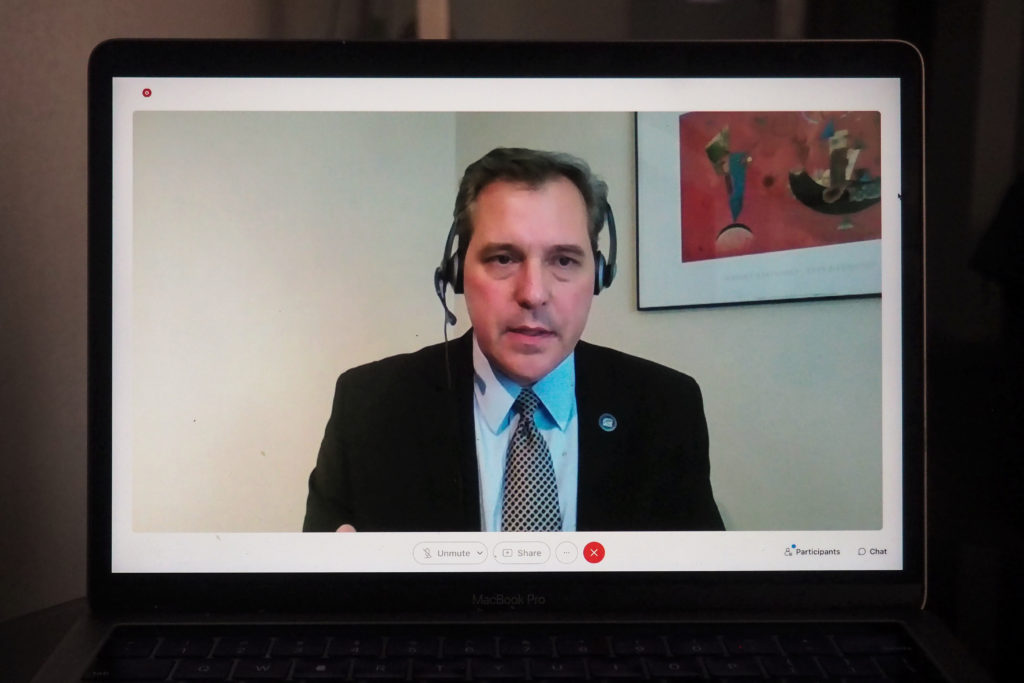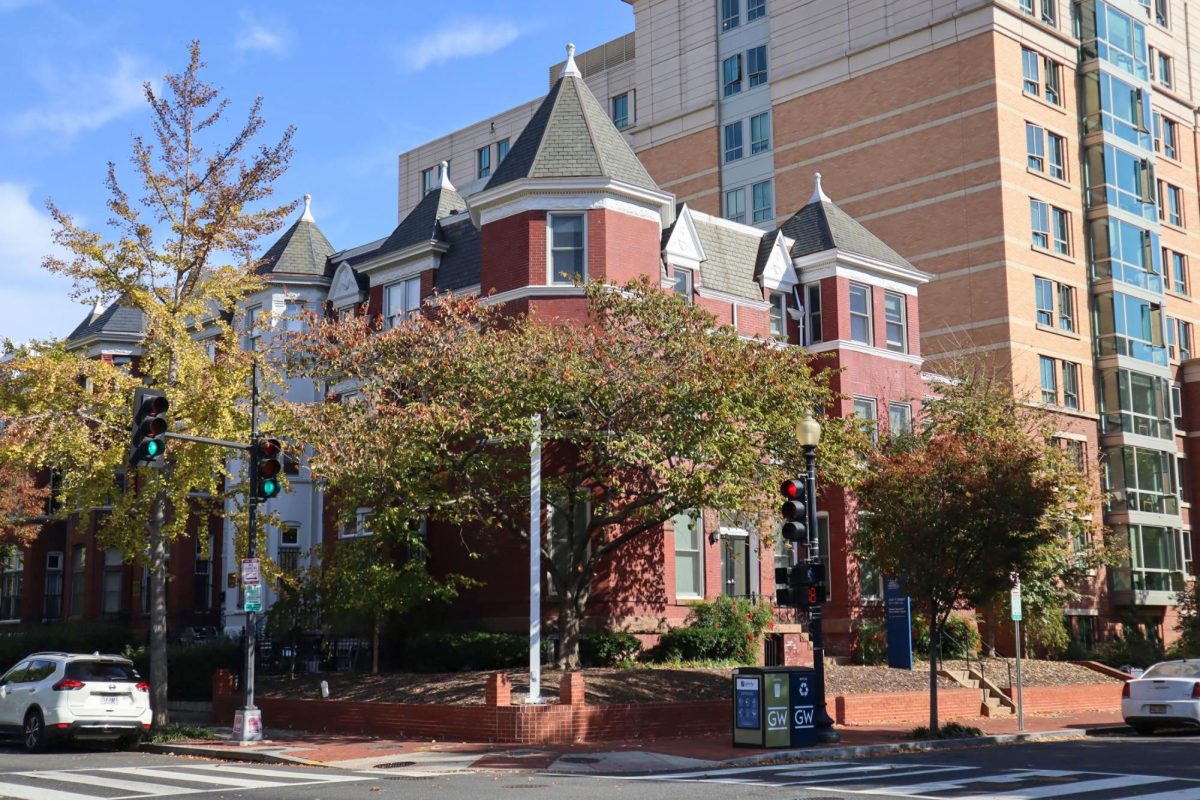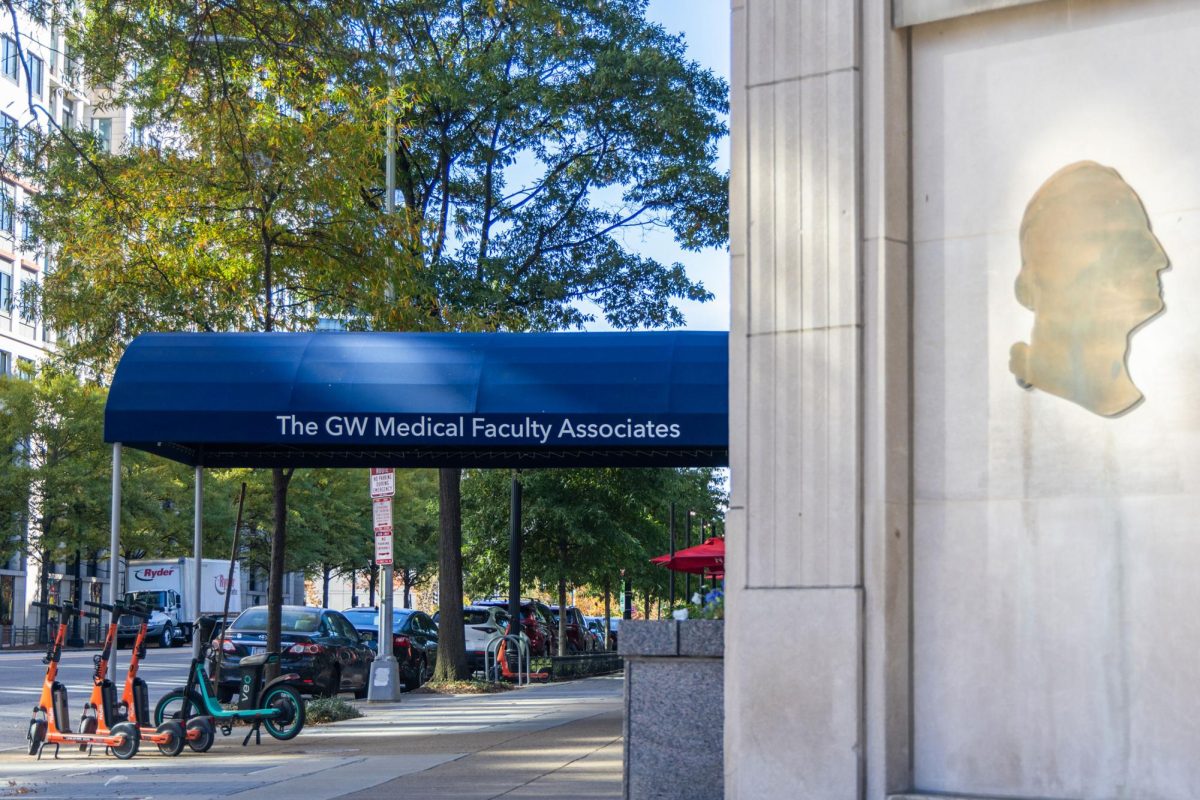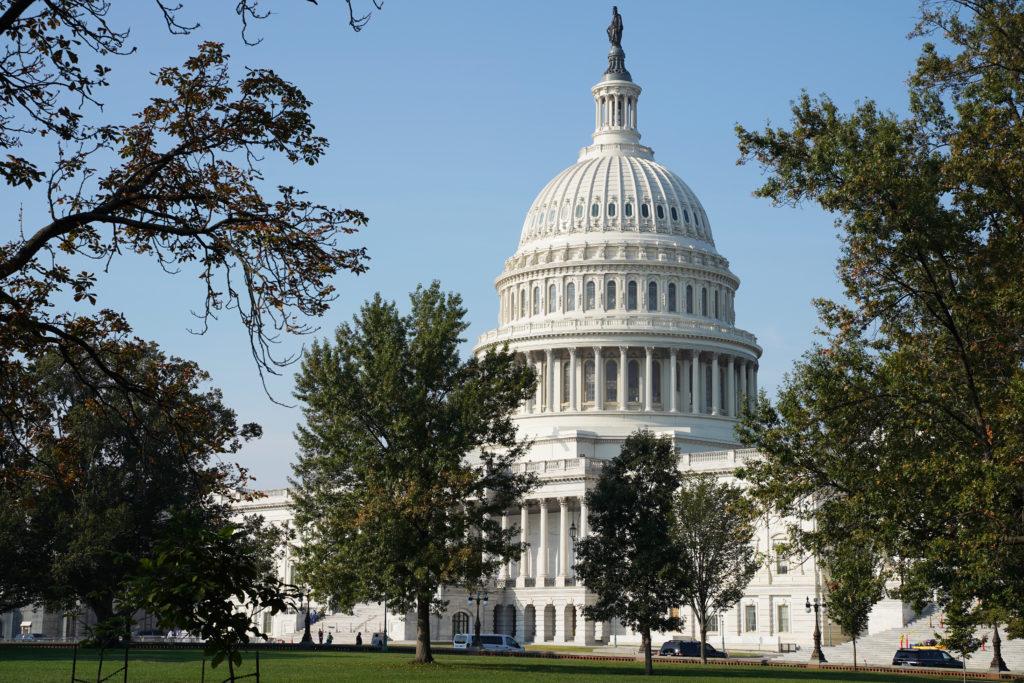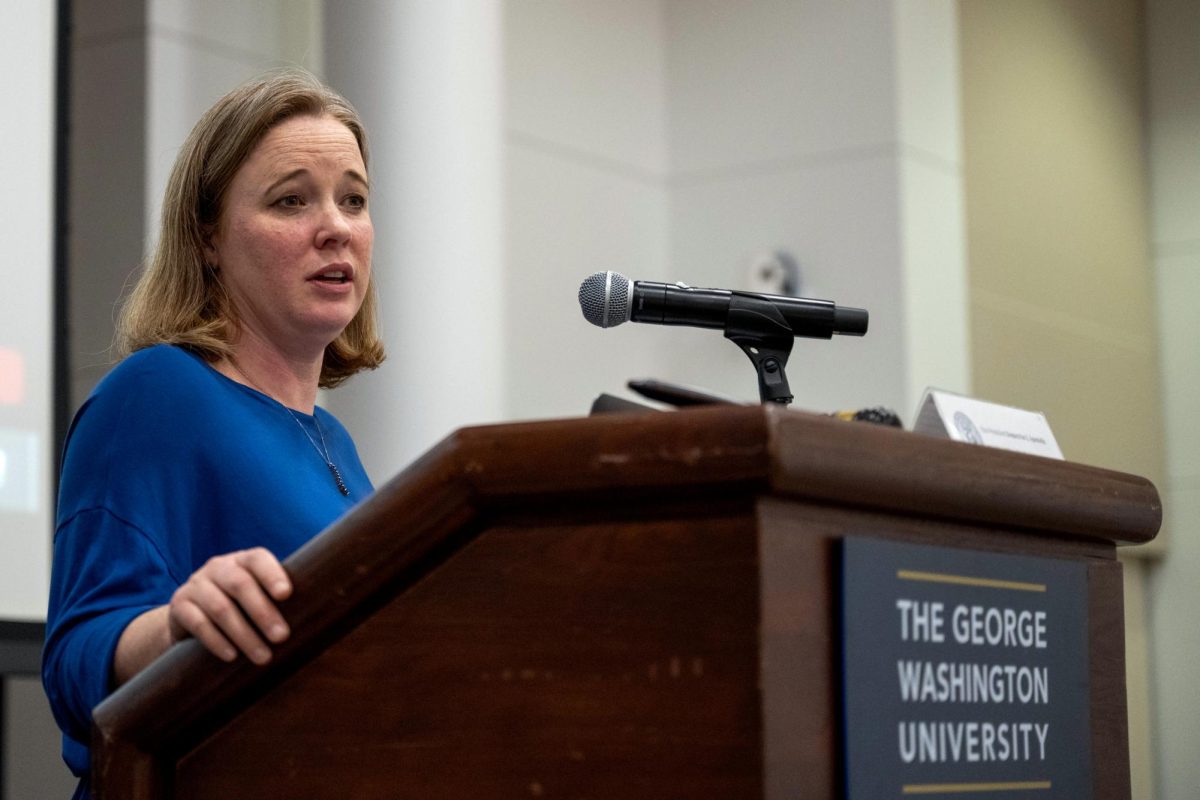GW’s undergraduate enrollment fell by almost 2 percent this year, slowing a multi-year decline precipitated by the effects of the pandemic and the now-obsolete 20/30 Plan.
Jay Goff, the vice provost of student enrollment and student success, said at a Faculty Senate meeting Friday that undergraduate and total enrollment fell by 1.6 percent and 2.1 percent, respectively. International enrollment fell more sharply – dropping 7.5 percent, which Goff attributed to pandemic-related travel restrictions – but officials bolstered enrollment levels by dramatically increasing the size of GW’s freshman class since last year.
“The big picture is that things look good, and that puts our enrollment on track,” Goff said. “We are very close to where we want it to be.”
University President Thomas LeBlanc had planned reductions in GW’s incoming class sizes as part of an initiative to reduce the undergraduate population by 20 percent over five years, but those plans were halted in April 2020 and declared “obsolete” by that November amid the pandemic and widespread faculty criticism. Officials accepted multiple rounds of waitlisted students to stabilize enrollment levels last year, but undergraduate enrollment ultimately dropped by almost eight percent in fall 2020.
The number of residential freshmen rose by nearly 30 percent compared to last fall, nearly matching the class size in fall 2019, according to the new data. Officials enrolled 2,571 residential freshmen, narrowly surpassing their bolstered target of between 2,475 and 2,550 students.
Goff said enrollment for freshmen and residential students this fall was “on track” with officials’ increased targets, and graduation and retention rates “rebounded” to levels similar to before the COVID-19 pandemic.
Goff said the number of undergraduate transfer students decreased from 296 to 138 since last fall. Officials had tripled the transfer acceptance rate last year as part of the efforts to stabilize enrollment when the pandemic hit.
“We had a very successful outcome in this in terms of we are a little bit heavier on the first-year students, and so we didn’t need as many transfer students to backfill and hitting that goal,” he said.
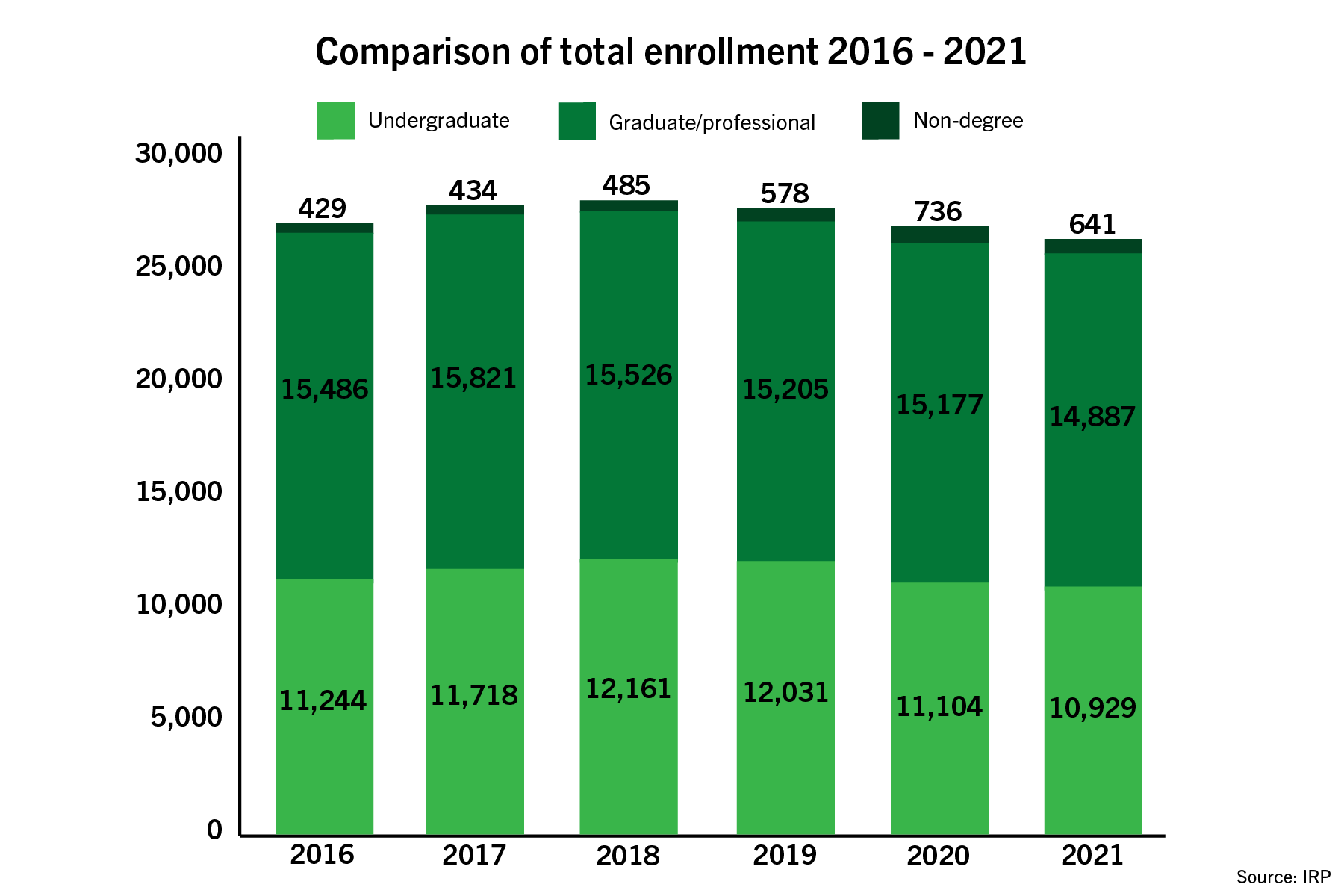
Nicholas Anastacio | Graphics Editor
GW enrolled 26,457 total students this fall, slightly dipping below last year’s total by 560 students. Overall enrollment has dropped steadily by 6 percent since a peak in 2018, when more than 28,100 students were enrolled, according to institutional data. LeBlanc cited the peak as reason for implementing the enrollment cut.
Goff said officials will prioritize international student recruitment and outreach efforts after this year’s drop. He said domestic enrollment was “relatively stable,” decreasing by 1.3 percent.
“That will help us regain these numbers and get more actively engaged in the international community because we know that this is a very important part of our campus student body and part of our diversity efforts,” Goff said.
A total of 2,709 new undergraduate students enrolled at GW this semester – a nearly 20 percent increase from last year – surpassing officials’ target of 2,650, according to the data.
Goff said the freshman class consisted of students from 48 states, the two exceptions being Wyoming and North Dakota. He said officials enrolled a “very strong” freshmen class this fall similar to previous years in terms of GPA, standardized test scores and academic rankings.
He said officials recorded a 91 percent first-to-second year retention rate for the Class of 2024, higher than last year’s 88 percent for the Class of 2023 and near the 92 percent for the Class of 2022 from the year before last. He said 9,864 undergraduates are living on campus this fall, and the entire residential student population numbers near 11,000.
Goff added that more than 70 percent of students who took a leave of absence last spring returned to GW this fall. He said enrollment also increased for male, first-generation, D.C. metropolitan area and traditionally underrepresented students.
Goff said administrators met the full need of the 379 Pell grant recipients this fall with awards totaling as much as $6,495.
Interim Provost Chris Bracey said in his updates that officials have updated employee benefits for postdoctoral researchers based on feedback they received since officials announced late last month that they would be classified as trainees instead of staff. He said postdocs will continue to be eligible for base and matching retirement contributions and tuition remission.
“We look forward to an ongoing dialogue with postdocs and the broader research community about supporting postdocs and recognizing their critical role within GW’s research enterprise,” Bracey said.
Bracey said officials assigned Gina Lohr, the senior associate vice provost for research, to serve as the provost’s office liaison to the Virginia Science and Technology Campus.
“She will be the key administrative presence on the VSTC maintaining a physical presence on the campus, and filling a number of vital functions, first of which is communications,” he said. “Gina will be the primary communications link between the provost’s office and the VSTC administration.”
Nikki Ghaemi, Aiden Orr and Zach Blackburn contributed reporting.


